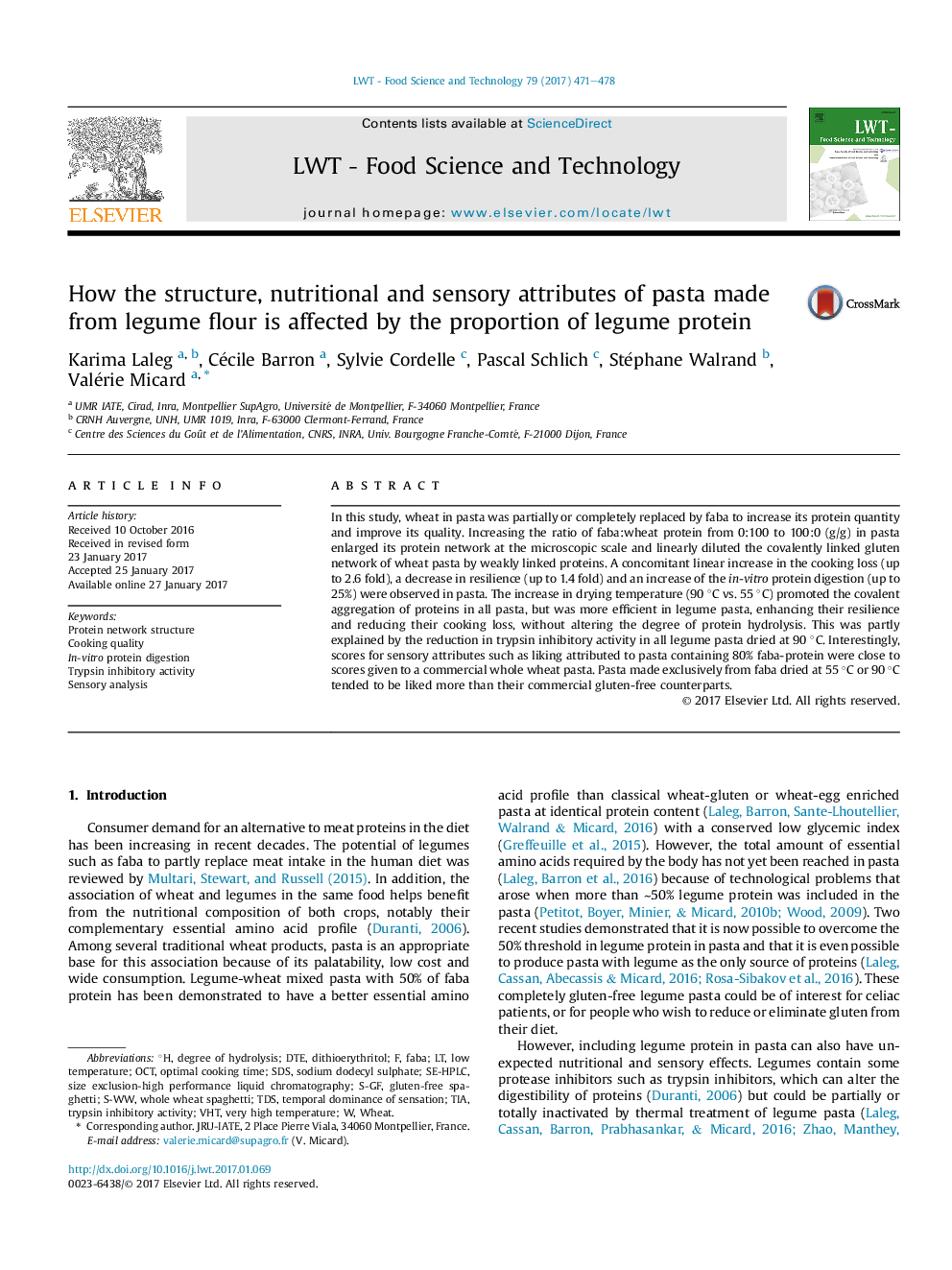| Article ID | Journal | Published Year | Pages | File Type |
|---|---|---|---|---|
| 5768796 | LWT - Food Science and Technology | 2017 | 8 Pages |
â¢Pasta enrichment in faba linearly weakens its protein network.â¢Increasing faba protein concentration in pasta enhances its in-vitro digestion.â¢High-temperature drying strengthens legume pasta structure.â¢Increasing drying temperature does not alter legume pasta protein digestibility.â¢Good quality protein or gluten-free legume pasta were appreciated by consumers.
In this study, wheat in pasta was partially or completely replaced by faba to increase its protein quantity and improve its quality. Increasing the ratio of faba:wheat protein from 0:100 to 100:0 (g/g) in pasta enlarged its protein network at the microscopic scale and linearly diluted the covalently linked gluten network of wheat pasta by weakly linked proteins. A concomitant linear increase in the cooking loss (up to 2.6 fold), a decrease in resilience (up to 1.4 fold) and an increase of the in-vitro protein digestion (up to 25%) were observed in pasta. The increase in drying temperature (90 °C vs. 55 °C) promoted the covalent aggregation of proteins in all pasta, but was more efficient in legume pasta, enhancing their resilience and reducing their cooking loss, without altering the degree of protein hydrolysis. This was partly explained by the reduction in trypsin inhibitory activity in all legume pasta dried at 90 °C. Interestingly, scores for sensory attributes such as liking attributed to pasta containing 80% faba-protein were close to scores given to a commercial whole wheat pasta. Pasta made exclusively from faba dried at 55 °C or 90 °C tended to be liked more than their commercial gluten-free counterparts.
